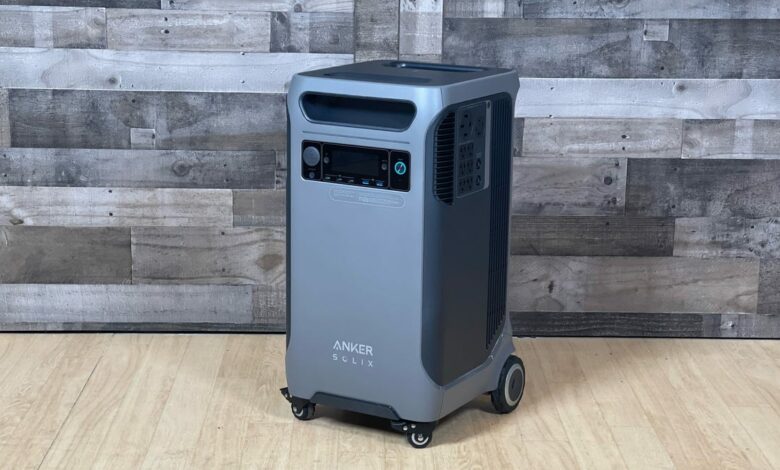Anker Solix F3800: a portable power station for all your needs



9.0
The Anker Solix F3800
Like it
- So many output options
- Huge capacity
- Flexibility in integration
I dislike
My personal favorite portable power station changes a few times a year. But right now it’s the Anchor Solix F3800and for good reason.
Anker has been a fixture in the game for a long time, but to be honest I wasn’t a huge fan of some of their earlier models. Thankfully the newer designs of the last few years, also carrying the “Solix” branding, have improved a lot and this lineup has brought us the F3800.
If you’re serious about home emergency power and want real options to weather any storms that come your way, you’ve come to the right place. Anchor Solix F3800.
Anker Solix F3800: The good
Let’s talk capacity. A lot of the portable power stations on the market tout “home emergency power.” But many of these units “flaunt” 800 watt-hours of capacity. Yes, you can keep your device(s) charged, maybe run a fan and a few lights, but that’s about as far as that capacity will get you. Your options for long-term power in this situation are pretty much zero.
The F3800 starts at 3,840 watt-hours (or 3.84 kWh), which is great for those basic needs over a longer period of time, or for elevated needs (climate, cooking, temperature) over shorter periods. But, like many other manufacturers these days, Anker is using the Solix F3800 as one of its most versatile modular platforms. You can add up to six additional expansion batteries (Anker Solix BP3800) of the same capacity for a total capacity of 26.88 kWh. That’s enough power to keep most homes running at the same rate they normally would for two or three days.
But that’s not all: act now and you can add a second Solix F3800 with six additional expansion batteries for a massive 53.76 kWh capacity. That’s all you’ll ever need. And if you don’t, you probably already have your own power station anyway.
Modular capacity is great, and it’s definitely the direction the landscape is moving in for many reasons. But that’s not my favorite thing about the Solix F3800. Shall we talk output options?
What I like most about this unit on a day-to-day basis is that it can not only supply regular 120-volt outlets, but also split-phase 240 volts in the same unit. Most portable power stations will only allow you to plug into outlets that provide 120 volts. And to be honest, that power is fine for the vast majority of things you’ll want to plug in. But what about non-gas ovens or clothes dryers? Those will need 240 volts. You could also opt to use this to charge an EV, or, using another non-standard output, a 30A “RV” output so you can power those off-grid camping trips too.
There are other manufacturers that offer 240 volt outputs, but most do this by combining two separate control units to give you 120V+120V = 240V via a combo box or transfer switch of some flavor. The Solix F3800 also offers a variety of combo boxes that can be purchased separately in the form of transfer switches, but these are primarily used for people who want to power their entire home with backup power via the F3800 platform. These options are not necessary to get 240 volts – just plug them directly into the side of the power station.
Anker Solix F3800: The bad
I’ll just throw it out there — price. For most people, the $4,000 Solix F3800 isn’t exactly a bargain. And if you’re wondering what the pre-tax cost of that 53.76 kWh setup is? It rhymes with flirty-gate thousand bucks (if parts were purchased separately). I’m not saying these products aren’t worth their list price. But I’d highly recommend looking for other deals — maybe Black Friday?
If you are really looking for a portable power station, it probably depends on your portability needs. If you’re just going to move this unit around within the same building and on the same level, then it’s probably fine. But if you need to transport this to multiple locations, bring a friend. While the wheels are somewhat helpful, this thing still weighs over 130 pounds.
The interface and layout of the Solix F3800 are pretty clean. Overall, I like the layout and design choices that were made. However, I can tell you that we had a lot of hands on this device and a few people found the location of certain buttons or controls less than intuitive. There were also times when buttons were pressed and functions didn’t execute. I didn’t experience this myself, so I won’t deduct points for it. But it’s worth mentioning since I’ve received that feedback more than once.
Anker Solix F3800: The heart of the matter
Price aside, I think anyone interested in home backup should consider this. The capabilities of the base unit, combined with the potential future expansion options, make this great for any scenario.




